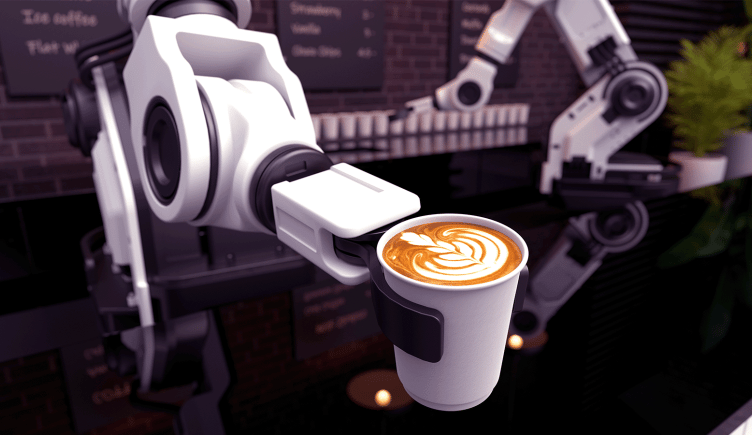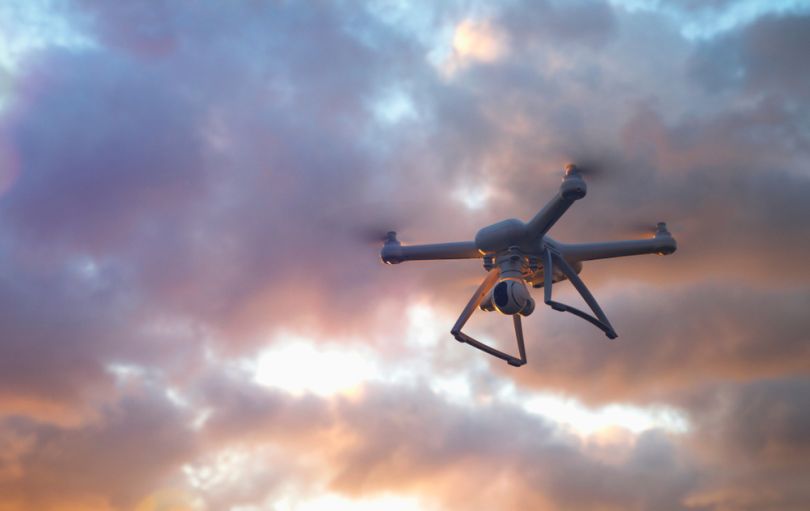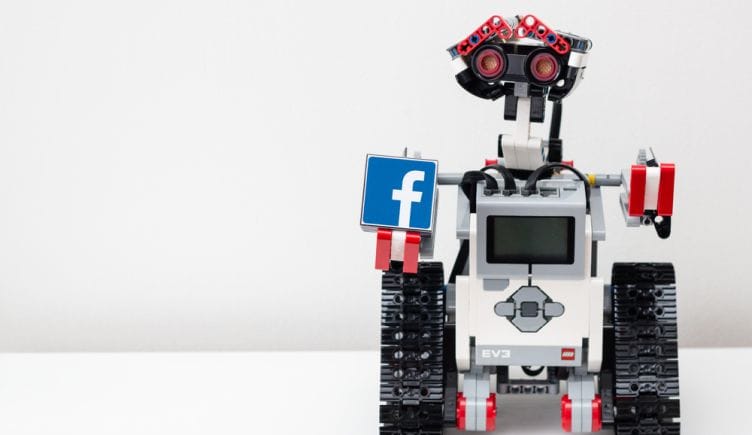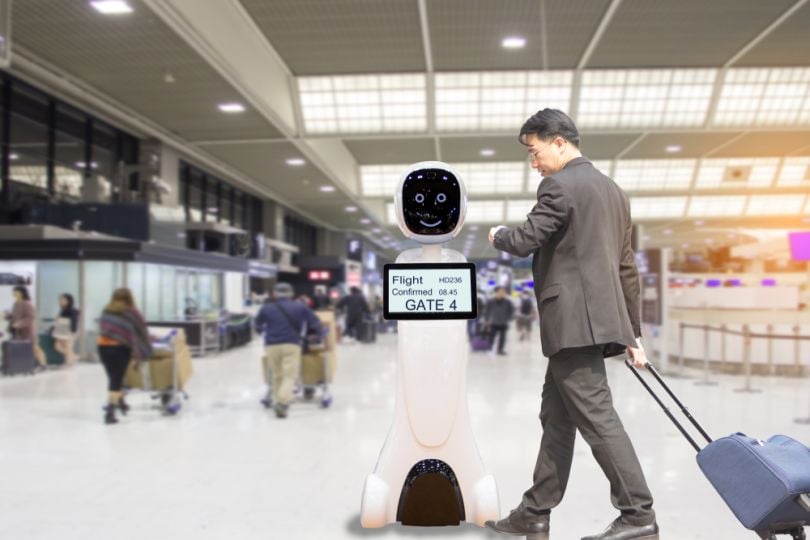 Image: Shutterstock
Image: Shutterstock
A cobot, or collaborative robot, is a robot designed to work alongside humans. As opposed to traditional industrial robots, which are typically kept away from humans because of potential hazards, a cobot creates a safe environment for both robots and humans. They often perform slower movements, remain aware of their surroundings with sensors and enter a safety mode when their usual patterns or environments are disrupted.
What Is a Cobot?
More on Robotic Innovation35 Robotics Companies on the Forefront of Innovation
What Is a Cobot?
A cobot is a robot that can safely work in proximity to humans. Cobots are equipped with sensors that enable them to navigate their surroundings, and a safety mode is activated if a cobot’s movements are interrupted. In addition, cobots are often smaller than typical robots and move more slowly, adding to their convenience and safety.
Many consumers are already familiar with cobots, given millions of households have entrusted cleaning duties to robot vacuums. Now, robot vacuum cleaners have made their way into the world of work. Whiz, an autonomous vacuum cleaner introduced in North America in 2019 by the Japanese company SoftBank Robotics, is working in hotels, senior living facilities, schools, universities and hotels, with more than 20,000 units deployed globally, according to Kass Dawson, SoftBank Robotics’ vice president of brand strategy and communications.
Just like at home, these types of robots are freeing up their human coworkers to focus on more high-value tasks while improving employee satisfaction, Dawson told Built In.
Collaborative vs. Industrial Robots
Industrial robots focus more on efficiency rather than safety, so they move at high speeds, carry heavier payloads and are typically larger than cobots. For these reasons, industrial robots are separated from human workers by cages or barriers. In addition to being smaller, carrying lighter loads and moving slower, cobots feature curves as opposed to sharp edges, keeping an emphasis on worker safety.
And while cobots can be set up quickly, industrial robots are more complex to program and usually require knowledge of particular programming languages. Cobots are also easy to reconfigure for different tasks, making them more flexible. In contrast, industrial robots are built for specific tasks, and it can be time-consuming to retrain them.
How Cobots Are Used Across Industries
For years, cobots have largely gone unseen in the world, working behind the scenes in manufacturing facilities loading and unloading parts into machines. While they still play an essential role in manufacturing, cobots have branched out into other industries and stepped more into the public consciousness.
Logistics
In the logistics sector, cobots can pick and place items, package goods, organize pallets and sort products. With their sensors, cobots can navigate warehouse environments, moving and retrieving goods as needed.
Food Service
Cobots have recently ventured into the service sector where they’re making coffee or serving food and drinks.
The restaurant industry is one area hit hard with labor shortages and a sector Dawson believes could see greater adoption of cobots: “The serving robots that are out there right now, I think are going to continue to showcase what automation can do for that industry.”
In a number of its restaurants, Chili’s tested a cobot developed by Bear Robotics called Rita, which supports staff by seating customers, delivering meals and singing to diners on their birthday. Other restaurant chains have invited cobots into their kitchens and dining rooms too. Chipotle announced further testing of an autonomous kitchen assistant dubbed Chippy — designed by Miso Robotics — which cooks tortilla chips for customers using artificial intelligence and the chain’s recipe and technique.
Healthcare
Cobots can handle a range of duties within hospitals and other healthcare facilities. These robots are adaptable enough to transport medical supplies through a hospital while avoiding objects and humans, freeing up nurses to focus on other needs. In addition, cobots can assist with surgeries, demonstrating a high degree of precision and accuracy.
Automotive
Automotive manufacturers can automate many processes by introducing cobots into their workplaces. Cobots can assemble car parts and aid with painting and coating them. These robots are especially useful for welding since they can weld accurately and, unlike humans, aren’t susceptible to burns. During the production process, cobots can even analyze parts for defects, preventing costly recalls and repairs later on.
Hospitality
For cleaning cobots like Whiz, the pandemic has been a boon to adoption — not only do they offer an automated, contactless cleaning solution, but customers or guests often see them in action so they can trust cleaning is actually happening. And in a tight labor market, these cobots free up workers to complete more high-value tasks that they may find even more enjoyable.
Benefits of Cobots
Safety
Cobots are small, carry light payloads and feature round curves, reducing the chance of workplace injuries or accidents. Equipped with sensors and safety features, cobots can also react to changes in their surroundings and cease operations if they detect an object in their path.
Flexibility
In contrast to their industrial counterparts, cobots are built to serve a broad range of functions. Teams can easily reconfigure cobots to address shifting priorities, making these robots ideal for completing a variety of smaller tasks.
Convenience
Many cobots don’t require programming, instead relying on human trainers to physically move them through the desired motions. This means any team member can train a cobot, making it a more accessible option compared to robots that need to be programmed.
Quality Control
Cobots often feature multiple arms, enabling them to operate with advanced precision and accuracy. Their sensors also allow them to assess parts and discover defects. With these abilities, cobots can improve product quality and assist with quality control.
Cost-Efficiency
Because cobots can handle different types of manual tasks, they can free up workers to focus on more challenging needs. Cobots are also cheaper than industrial robots. Combine lower costs with increased worker production, and cobots can deliver returns for businesses.
The Future of Cobots
While cobots will likely continue making lives easier for staff in a number of industries, and greater adoption in the service industry is to be expected given labor shortages, researchers like Giuseppe Loianno, an assistant professor of robotics at New York University’s Tandon School of Engineering and director of the Agile Robotics and Perception Lab, are trying to make them even more collaborative with humans and one another.
He and his colleagues are studying how algorithms used in a single robot or cobot can be scaled across a whole team of cobots, working with small aerial robots like drones, and ground-based robots that can work in hazardous, and sometimes confined, settings like search and rescue and environmental monitoring where movement may be constrained.
For Loianno, the challenge lies in helping cobots share information efficiently so they can complete their task. “Sometimes you have a lack of communication, or you cannot communicate, so how do you make these algorithms fully distributed with minimum communication?” he said. “I think that’s one of the major challenges, and the challenges exponentially increase as soon as the robots are free to navigate with respect to each other.”
Dawson sees the future of cobots in the workplace shifting even more to a single task, forgoing a general purpose approach that is ultimately inefficient and prone to not meeting the (often overly inflated) expectations of humans.
And there’s been a realization that the “true value” of automation rests in identifying one simple task that can alleviate “pain points” in our work environments, according to Dawson.
“Technology is getting better,” he said. “But I think the robotics community is also getting better at understanding how to build and deploy these things for the markets in which they’re doing business.”
But the future of cobots also relies on human acceptance and ultimately how we will treat our robot coworkers. Will we look at cobots simply as tools, or will we think of them as the robots, and technological advances, that they are?
“We need people to understand and appreciate it as a technology,” Dawson said of Whiz. “We should be treating it more like a computer than like a vacuum cleaner. And that’s an important evolution of how we’ve gone through our deployments and getting people to understand that the success of this and the continued adoption of it is tied to how it’s being treated.”
Frequently Asked Questions
What is the difference between a robot and a cobot?
Many robots, especially industrial robots, are designed to work independently and prioritize efficiency. Cobots, in contrast, are created to work alongside humans and emphasize safety. Compared to industrial robots, cobots are smaller, move more slowly and demonstrate greater flexibility to perform a range of smaller tasks for human workers.
How much does a cobot cost?
Cobots can cost anywhere from $10,000 to $50,000. When researching the price of a cobot, it’s best to contact the original brand or its official supplier for more details.
If the website content violates your rights, please contact us to delete it。








